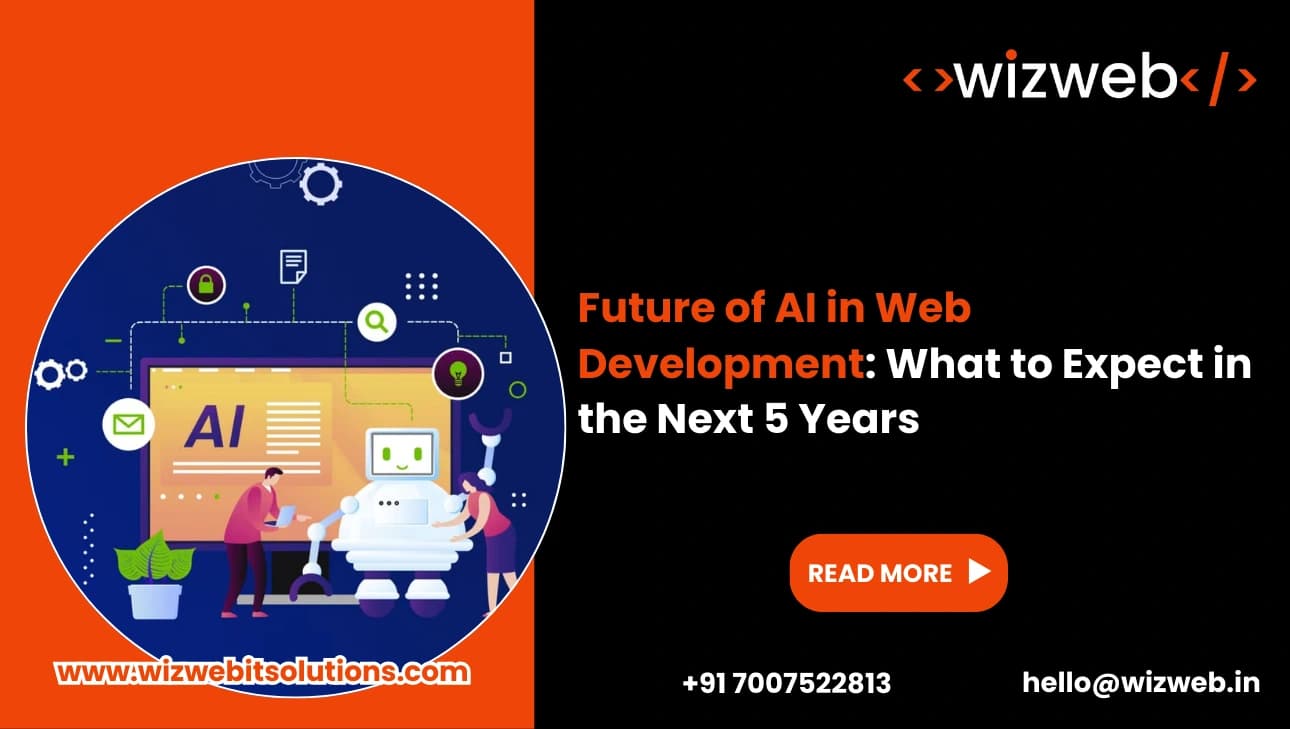Get in Touch
- Phone
+91 700 752 2813
- Email Now
hello@wizweb.in
Office No - 204 A-140, Sector 63 Road Noida, Uttar Pradesh 201301

The Future of AI in Web Development is not something far away — it is happening now and will change a lot over the next five years. In this article I will explain, in simple words, what to expect. I will cover the tools developers use, how websites will feel for users, the jobs that will change, the risks to watch, and how businesses can get ready. I will also use the term AI/ML Development Services where it helps for linking or further help.
Many companies started using AI across their work in 2023–2024, and adoption kept growing in 2024–2025. AI is already powering tools that help write code, create page designs, and personalize what users see. This growing use shows that the Future of AI in Web Development will be about making developers faster and making websites smarter for each person who visits.
One big change is better coding assistants. Tools like GitHub Copilot and OpenAI Codex help developers by suggesting code, completing functions, and even writing tests. Over the next five years these tools will understand whole projects better, not just single files. They will suggest larger pieces of code, find bugs earlier, and speed up routine work. This does not mean humans are gone — developers will still make the final decisions, design system architecture, and check code quality. Using AI/ML Development Services can help teams add these tools safely.
AI website builders already let people make simple sites in minutes. In the next five years, these builders will be able to create more advanced, responsive sites with good SEO, content suggestions, and design tweaks automatically. That means small businesses can launch faster and cheaper. For professionals, the value will move toward custom features, integrations, and better user experiences. If your team lacks AI skills, consider partnering with AI/ML Development Services to get professional-quality results while using builders smartly.
Expect websites to become more personal. Instead of one homepage for everyone, sites will change content, layout, and product suggestions based on who the visitor is and how they behave. This can improve conversions and make users feel seen. But personalization needs careful data rules so it stays private and fair. Many businesses say they are not ready for modern personalization, so working with experts or AI/ML Development Services will help set proper safeguards.
AI can test UIs in many states, find accessibility issues, and suggest speed improvements. It can also help find common security mistakes. But AI can make mistakes too — sometimes it creates code that looks fine but causes long-term maintenance problems. This is called “AI tech debt.” So teams must keep human reviews, automated tests, and good documentation to avoid trouble later.
Running real-time personalization or dynamic content means more backend power. Over the next five years we will see more use of edge compute, model-serving platforms, and AI-friendly hosting. Planning for these needs is part of getting ready for the Future of AI in Web Development. Businesses working with AI/ML Development Services should budget for this infrastructure and choose partners who understand model deployment and scaling.
Some routine tasks will be automated. That changes job shapes: developers will spend less time on boilerplate and more time on design thinking, privacy, model supervision, and user experience. Designers will use AI to prototype faster but will still decide what is best for people. People who learn to work with AI tools and to test them responsibly will be most in demand.
The Future of AI in Web Development is exciting and practical. In five years, websites will be faster to build, more personal, and smarter. Still, human choices — design, ethics, and care — will matter most. AI will be a tool that makes work faster and opens new possibilities, but people will keep the job of making websites useful and trustworthy.